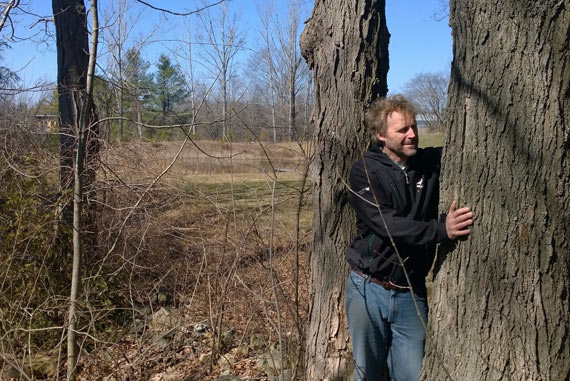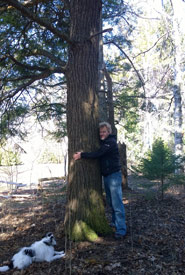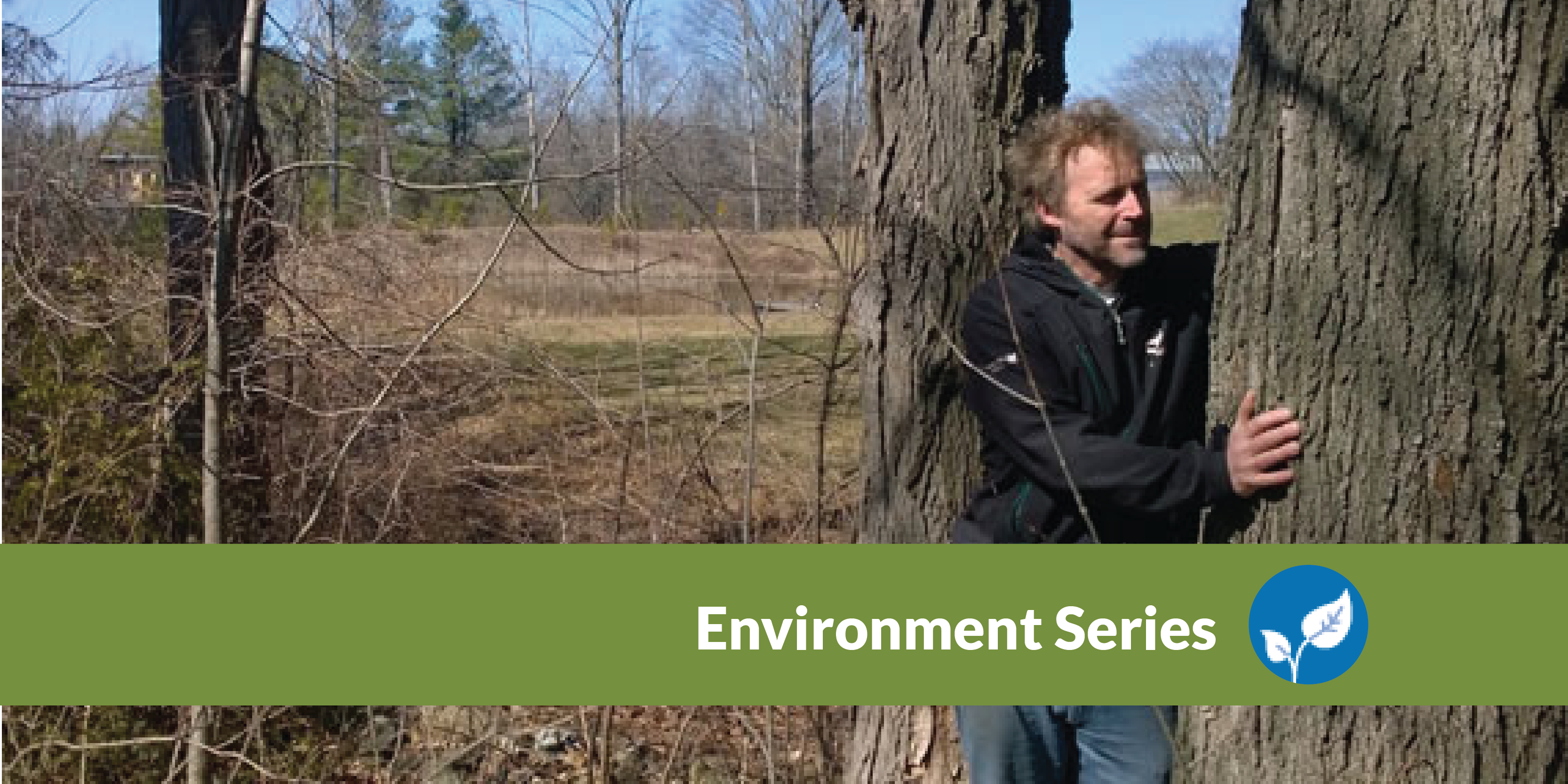This post was provided by Dan Kraus, Weston conservation scientist and senior director of conservation program development for the Nature Conservancy of Canada, as part of our featured series on the environment.

I need to start out by saying that I’m a scientist. I’m not a hippy. I don’t burn incense, own healing crystals or wear tie-dye. I drive a car, eat meat and enjoy reading things like updates to the income tax act.
And, I’ll openly admit I really like trees. Mostly when I deal with trees it’s in the context of community ecology, forest dynamics, succession and identifying rare and unique forest types.
I need to explain how a scientist found himself hugging a tree, and, okay, liking it more than I thought. Maybe most importantly, I now understand why I liked it so much.
This story starts with a word. I was discussing the Why Forests Matter speaker’s series that the Nature Conservancy of Canada and TD Bank Group hosted with a few of my relatives of German ancestry. As I chatted with them about the topics discussed at the event, one of my relatives looked at me and said the German word “Waldensemkeit.” After a puzzled look from me, they explained that it’s a word about being in the woods.
Waldensemkeit. I had been forced as a child to attend Saturday morning German school, and retained a basic grasp of the language, but had never heard this word. When I checked the official translation, I found that Waldensemkeit means: the feeling of peace that one gets when being alone in the woods.
Once I got over my initial amazement that the Germans had a word for such a thing, it made me wonder about how language can influence our relationship with nature. I began to look into other cultural references and languages that related human experiences to being in the woods. To my surprise, in Korea and Japan they had developed words that translate into “forest-bathing” — a cleansing by being in forests and taking in their scent.
I knew I was fond of pine scent, and certainly enjoyed being in the woods. I was also quite sure I’d probably experienced Waldensemkite several times. This made me wonder: if the Germans, Japanese and Koreans had actually developed words that describe the specific experience of being in the woods, how real are these experiences? What was the empirical evidence?
I’ll admit I was kind of skeptical. The English language has many words for many things that are not real, or at least can’t be measured. However when I started researching, I found that this human response to trees is not without real physical evidence. Recent studies show that breathing forest air has a direct impact on our health. Breathing air from trees certainly provides us with oxygen, but trees also release an arboreal aerosol of other compounds that have measureable impacts on our blood pressure, immune system and sense of well-being. That smell of pine and spruce in the deep woods is actually a complex chemical mist with names alpha-pinene, carene, myrcene and terpene. These are real compounds that we inhale into our lungs; that enter our bloodstream and that affect our body and our brain.
Did this invisible forest mist have an impact on me? As a scientist, I relish experiments. So this was my design: for one week, I would spend at least five minutes maximizing the human/tree interface (i.e. tree hugging). I live in a rural area, so this meant I could conduct this experiment without any observers (except my dog Lyla). I chose hugging since I do have the luxury of being near trees almost daily, so I needed contact that was above my usual baseline. I would record my how I felt before and after hugging, and at the end of the day.

I had close interaction with seven different types of trees that week. I hugged white ash, balsam fir, sugar maple, American beech, trembling aspen, white cedar and white pine. I see these individual trees all the time, and was a little surprised by how much more you get to know a tree in five minutes of close contact.
The deep furrows in the bark of white ash have a microcosm of mosses and lichens. Sugar maple was visited the most times by chickadees and nuthatches stashing seeds under the bark. Cedar had the best scent. Balsam fir has pockets of resin that got my hands and coat sticky. The fine white power on the trembling aspen’s smooth bark would rub off on my face.
How did I feel? Once I got through the first few moments of seriously questioning my experiment and avoiding the concerned cock-headed stare of Lyla, I definitely found I enjoyed this daily dose of tree hugging. Maybe it was just thinking about how I must look with my arms wrapped around a tree, maybe it was just taking a few minutes to quietly breathe, maybe it’s holding another living thing that will be around to see my great grandchildren. Maybe it was the scent of a tree and the natural high of the invisible forest mist.
Bottom line: it’s hard to hug a tree or spent time in a forest and feel bad at the same time.
Even the World Health Organization supports this conclusion. A recent report on nature and human health has identified that, “the interaction with nature may contribute to treatments for depression, anxiety, and behavioural problems.”
It’s a humbling thought that trees not only define ecosystems, support plants and animals and protect our water and air, but that trees may change us by sharing a gentle dose of air-borne, mind-altering drugs that calm and relax. Breathing deep that forest air, that great Canadian air freshener of one trillion trees, may make us all better people, and may be one of Canada’s most important exports to the rest of the world.
Could it be that trees are trying to tell us something, if we only take the time to listen?
To learn more about Nature Conservancy of Canada, please visit their charity profile page >>
Updated on November 1, 2024
Donate Now





